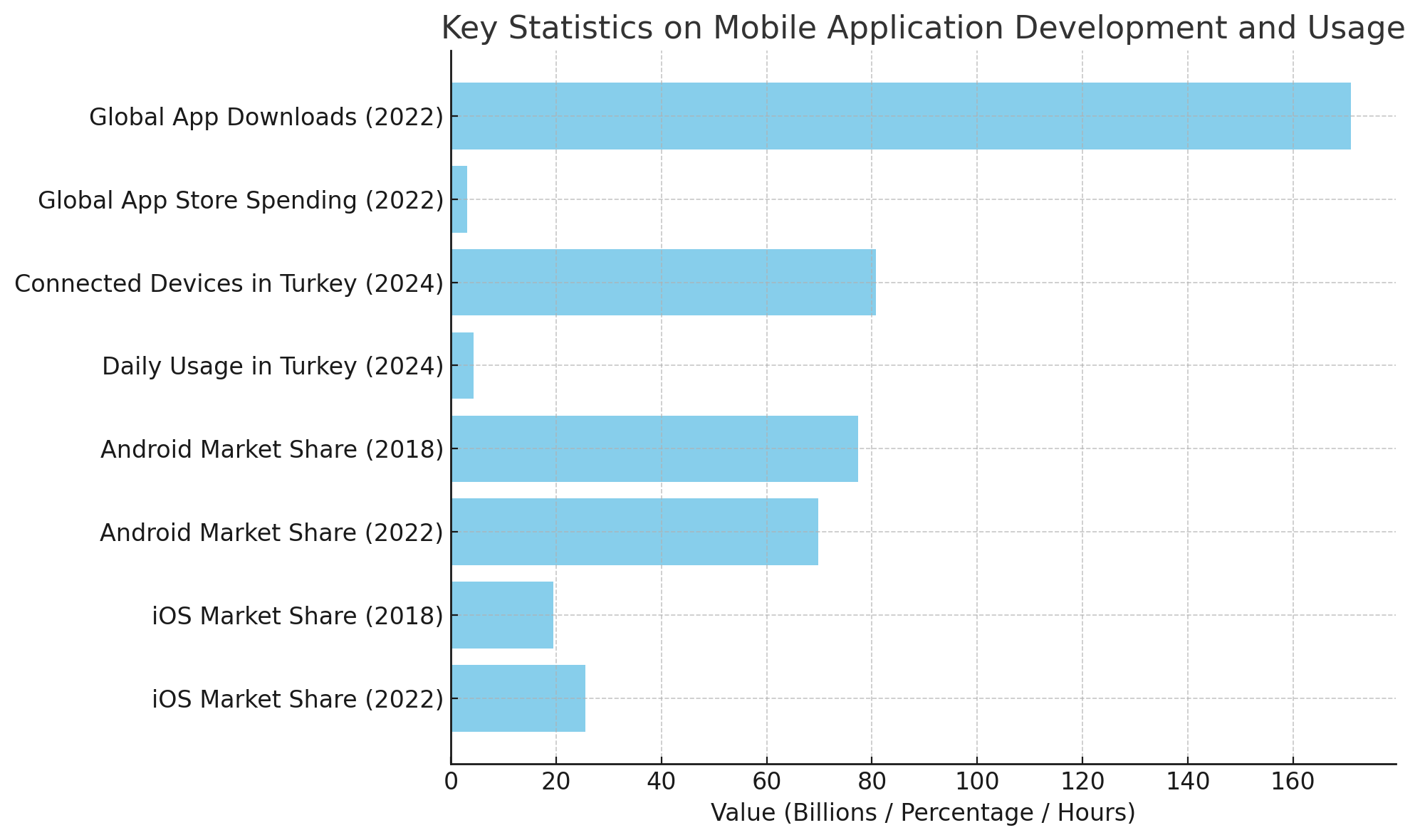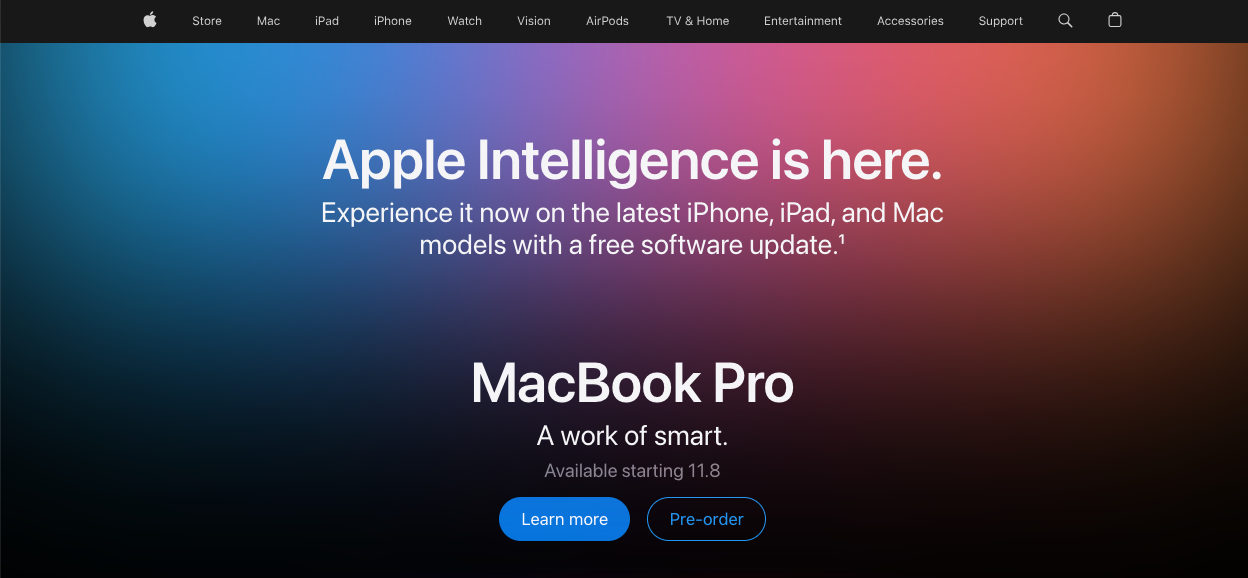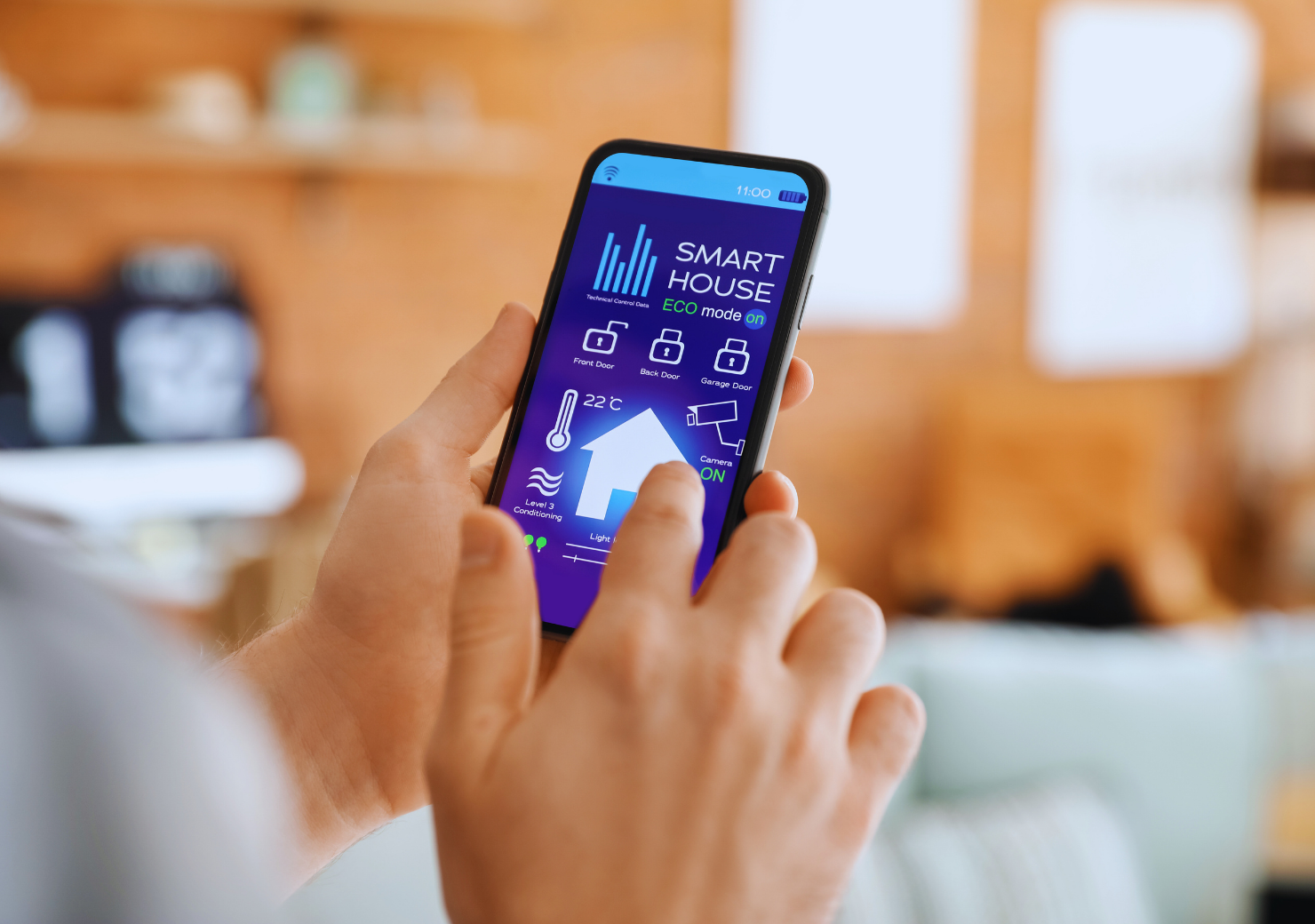The mobile application development process is a detailed journey that ranges from the idea stage to bringing the application to life and then improving it based on user feedback. Each phase involves critical steps that impact the success of the application. Here are the fundamental steps of the mobile application development process:
Idea and Goal Setting: Taking the First Step
The mobile application development process starts with a clear idea and specific goals. In this stage, the purpose of the application is defined: What problem will it solve, what gap will it fill, or what convenience will it provide for the user? The answers to these questions outline the roadmap for the application. Goal setting is essential to ensure that the application is functional and meets user expectations. Defining the problem it aims to address and the value it will provide directly affects the design, development, and marketing stages of the application.
Target Audience Analysis: Who Are You Reaching?
The success of the application depends on accurately identifying its target audience. In target audience analysis, demographic characteristics (age, gender, education level, profession), behavioral tendencies (mobile device usage habits, preferred types of applications), and user needs are taken into account. As a result of this analysis, a more precise roadmap for the application’s features and design can be created. For example, a social media application targeting a younger audience will have different functional and design requirements than an application aimed at the business world.
Defining Application Features: Planning Functionality
The features the application will include directly affect the user experience. In this phase, the needs of the users are analyzed in detail, and the functions of the application are determined. For instance, in an e-commerce application, product filtering and payment options are prioritized features. While determining features that enhance the user experience, it is also important to ensure the application remains simple and clear. Selecting the right features based on user needs facilitates the adoption of the application and encourages users to engage with it for a longer time.
Creating Wireframes and Prototypes: Building the Application’s Skeleton
The wireframe and prototype phase allows the core structure of the application and user flow to be visualized. The wireframe displays the main components of the application and the connections between screens. The prototype takes this a step further by enabling users to experience a realistic version of the application’s functionality. During this phase, developers and designers get the chance to evaluate whether the application is user-friendly. The wireframe and prototype process plays a significant role in identifying potential deficiencies in the design and development stages of the application.
UI and UX Design: Providing an Impressive User Experience
UI (User Interface) and UX (User Experience) design are crucial for an application’s success. While UI determines the aesthetic aspects of the application, UX design ensures users can easily use the application. Visual elements such as color choices, fonts, icons, and button designs form the first impression of the application. In UX design, users’ ability to navigate easily and find what they are looking for is prioritized. The stronger and more consistent the UI and UX design, the more time users will spend in the application and the more likely they are to continue using it.
Choosing the Right Technology: Native or Hybrid?
Technologies used in mobile application development create a significant difference in terms of the application’s performance and areas of use. Native applications are developed for a specific platform (e.g., iOS or Android) and can utilize all features of that platform. Although they offer superior performance, they come with higher development costs and a longer timeline. Hybrid applications can run on multiple platforms with a single codebase; they have a shorter development time and lower cost but may face performance limitations compared to native applications. Choosing the right technology according to the type of application is essential for its long-term success.
Development Process: Coding and Debugging
In the development phase, the determined design and functions of the application are coded. During this stage, developers bring the application’s features to life while optimizing it for performance and security. Debugging is essential to ensure the application operates stably. Feedback is gathered throughout the development process, and necessary improvements are made. Regular testing at each stage helps the application progress with fewer potential errors.
Testing Phase: Ensuring Application Quality
The testing phase is necessary to ensure the application runs smoothly on various devices and operating systems. Various types of tests are applied at this stage: Functionality tests check that all features of the application work correctly; performance tests analyze aspects like speed and resource usage; usability tests focus on evaluating the user experience. In addition, security tests ensure that user data is protected and the application is secure. Once the testing process is complete, the application is free from potential errors and provides users with a seamless experience.
Publishing: Managing the App Store and Google Play Process
Once testing is completed, the application is ready to be published on platforms like the App Store and Google Play. In this process, the application’s descriptions, screenshots, keywords, and other metadata details are prepared. Compliance with the specific rules of each platform is essential in the publishing phase. For instance, Apple and Google have detailed guidelines for user experience and privacy policies, and it is crucial to align the application with these rules.
Application Marketing and Acquiring Initial Users
An effective marketing strategy should be developed to increase downloads and encourage usage of the application. App Store Optimization (ASO) increases the application’s visibility, while digital marketing strategies like social media, email marketing, and content collaborations promote the application. Additionally, in-app rewards, promotions, or special campaigns for initial users can help raise awareness of the application.
Updates and Maintenance: Keeping the Application Dynamic
After the application is published, regular updates should be made based on user feedback and market demands. Updates include adding new features requested by users, applying security patches, and making performance improvements. Additionally, any issues reported by users should be addressed promptly. Continuously improving the application with updates increases the likelihood that users will continue to use and prefer it.
What are the usage rates of Mobile App Development around the world?

Mobile application development is a rapidly growing sector worldwide. In 2022, it is estimated that the global mobile application download count reached 171 billion, with app store expenditures increasing annually by 10.3%, reaching 3.1 billion dollars. In Turkey, mobile application usage is also increasing, with the number of cellular-connected devices reaching 80.69 million in 2024, and smartphone users spending an average of 4 hours and 26 minutes per day on these devices. Market shares between operating systems vary; while Android’s global market share, which was 77.32% in 2018, dropped to 69.74% in 2022, iOS’s share rose from 19.4% to 25.49%. These figures show that mobile application development is growing rapidly worldwide and in Turkey, and that mobile devices are increasingly popular among users.

Mobile application development is a comprehensive and meticulous process that spans from planning and target audience analysis to design and coding. An application supported by the right strategy and regular updates increases its chances of achieving long-term success by providing value to users.













